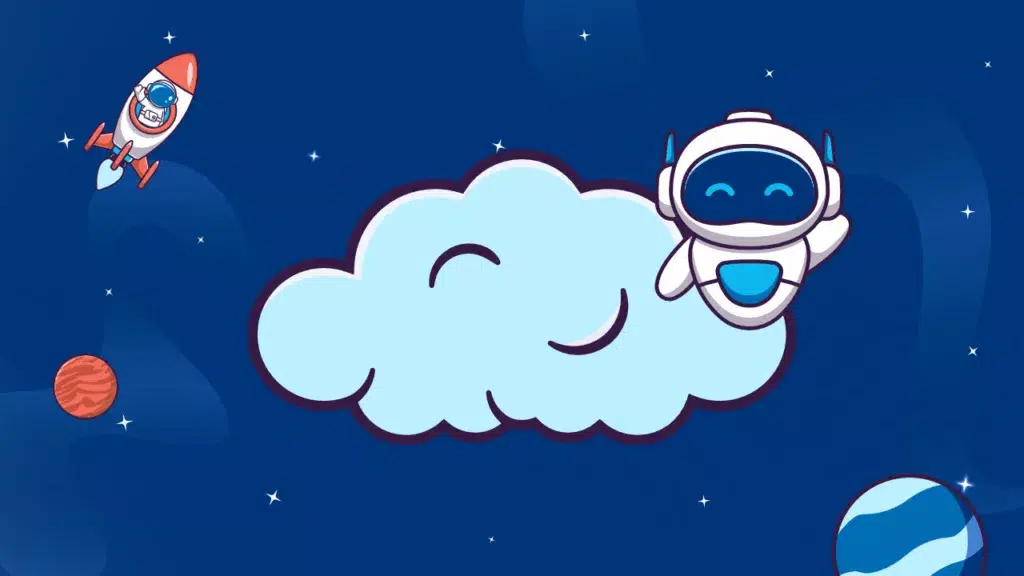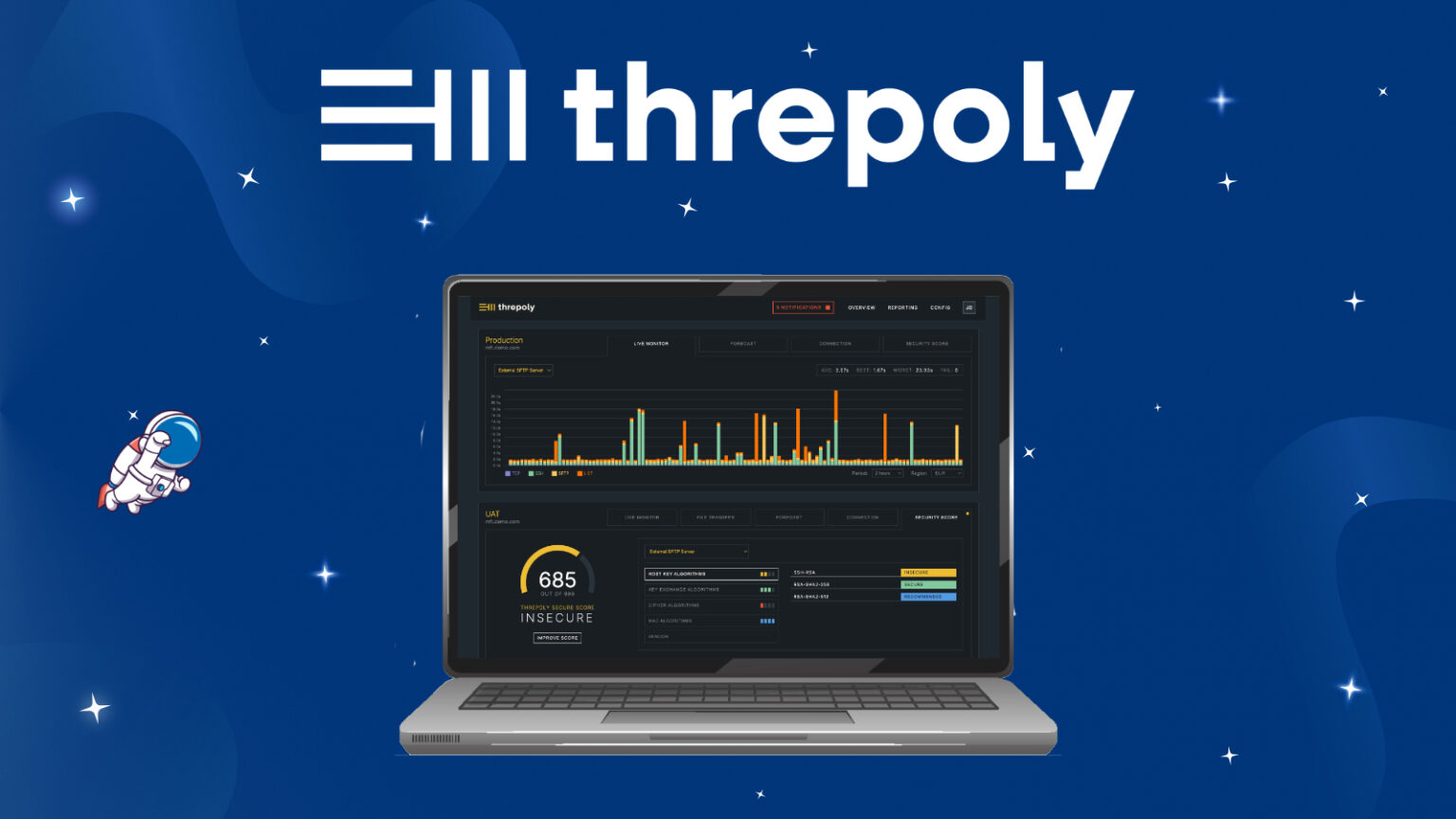The global state of IT automation report 2023, conducted by Stonebranch in collaboration with Censuswide, provides valuable insight into the priorities, challenges and trends in IT automation and orchestration in 2023. The report is based on a survey of 439 IT automation professionals from organizations with over 1,000 employees, covering topics such as: IT Automation, Cloud Orchestration and IT/Business alignment. This article will highlight the key findings and trends discussed in the report.
Automation programs will continue to grow
Cloud 2023 trends
Cloud automation is a top priority in 2023. Organizations are automating everything from SaaS tools to cloud-native applications to cloud infrastructure.
Out of the 439 IT-respondents, 81% plans to grow their automation program over the next 12 months. Even more, a third of that 81% has expressed an enterprise-wide focus to grow and adopt growing levels of automation.
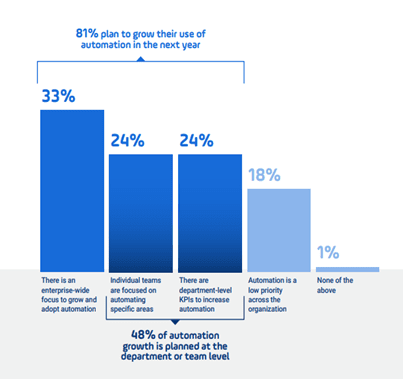
The primary area of focus for the respondents is cloud automation, with 42% of them expressing a strong intent to invest in this field. However, this is just the beginning of a much broader trend. While cloud automation stands out as the top choice for standalone investments, it is important to note that almost all other investment categories also are related to cloud activity. This could involve managing cloud infrastructure or orchestrating applications that rely on cloud services.
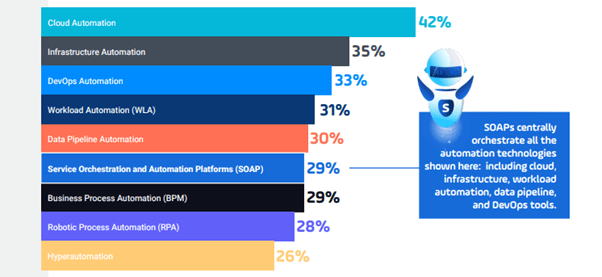
WLA is being replaced by SOAP
-86% of respondents plan to replace or add a new workload automation platform.
Many companies are grappling with a challenge: their existing workload automation (WLA) tools are unable to effectively operate in the cloud environment. As a result, there is a growing trend of replacing these tools with service orchestration and automation platforms (SOAP). The primary reason for this shift is that SOAP platforms offer distinct advantages over legacy WLA systems, particularly in terms of their ability to automate cloud-based processes, handle large-scale data pipeline, and integrate seamlessly with DevOps toolchains. In fact, some experts even predict that by the end of 2023, a staggering 80% of organizations currently relying on workload automation, will have transitioned to SOAPs for orchestrating their workloads.
Cloud Orchestration
Cloud automation is becoming increasingly integral in business operations. According to the survey conducted by Stonebranch on Cloud Automation Priorities, the top priority for companies is to establish permanent production jobs in the cloud. This indicates a shift from merely testing the cloud to fully incorporating it into day-to-day operations. By automating the deployment of cloud resources, companies can effectively manage costs by ensuring that operations are only running when necessary.
Cloud automation priorities
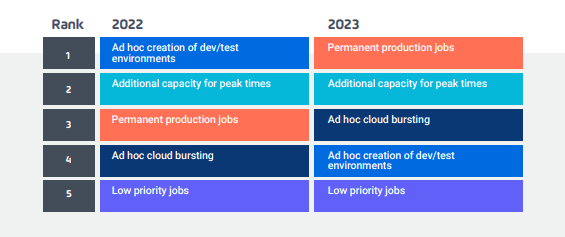
Interestingly, despite the growing significance of the cloud, only 53% of companies surveyed have a centralized CloudOps team in place. However, the survey also reveals that a remarkable 96% of employees are in some way involved in cloud operations. In other words, cloud responsibilities are expanding, and the accountability for managing cloud environments is being distributed across various teams within organizations. These findings suggest that organizations are adopting a strategic approach to the management and operation of their cloud environments.
Multi-cloud environments are widely used by organizations to take advantage of the unique features offered by different cloud platforms. In 2023, a survey revealed that 32% of respondents automate data transfers between multiple public cloud providers. The majority of organizations use multiple public clouds (46%) and multiple private clouds (49%). Efficient data transfer is crucial as organizational data is distributed across various cloud environments.
Do you automate data transfers between multiple public cloud providers?
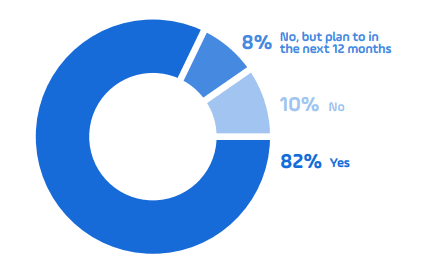
82% of respondents automate the transfer of data between cloud environments.
With organizational data spread across multiple clouds, seamless and efficient data transfer is critical. Multi-cloud environments allow organizations to leverage the strengths of diffrent cloud platforms to meet their unique needs.
IT/Business Alignment
The adoption of self-service automation is experiencing significant growth among organizations. A higher percentage of respondents now offer self-service automation to their organizations compared to the previous year. This trend reflects the increasing focus on improving efficiency and streamlining processes within businesses. Self-service automation is a user-friendly solution that enables individuals within an organization to perform tasks and workflows without relying on IT. It empowers users to take control of their processes, reduce manual work, and enhances efficiency for both end-users and the IT team.
Like mentioned above, self-service is experiencing immense growth, with a doubling in adoption by data teams and a quadrupling by developers. In the past employees had to rely on IT for completing requests, which often resulted in delays, missed deadlines and most of all, decreased productivity. So now with more automated self-service platforms, IT teams are now freed up to concentrate on more strategic tasks, increasing efficiency and improving workflow within the organization.
Most organizations are even starting to establish centralized IT automation teams, 77% of respondents have such a team with up to 50 members, regulating maintenance/monitoring, continuous improvement and strategic planning.
The increasing prevalence of multi-cloud environments and evolving data operations strategies has made the transition from automation to orchestration a crucial aspect of achieving technological success in today’s enterprise. Orchestration plays a vital role in enabling the full realization of hybrid IT success. Without proper orchestration, the effective management and coordination of diverse cloud environments and data operations become challenging, hindering the organization’s ability to fully leverage the benefits of these technologies.
In conclusion, the IT automation and cloud trends in 2023 indicate a strong focus on cloud automation, including the replacement of legacy workload automation tools with service orchestration and automation platforms. Organizations are prioritizing the establishment of permanent production jobs in the cloud and adopting self-service automation to improve efficiency. The need for centralized Cloud Ops teams and proper orchestration in multi-cloud environments is also evident. Overall, automation and cloud technologies continue to play a crucial role in optimizing operations and achieving technological success for organizations in 2023.
The final word
Deciding to move to the cloud is just like deciding which software or hardware to buy. As such, it’s important to consider your organization’s requirements when planning your move to a hybrid cloud environment. For example, will you store sensitive information in the cloud?
If yes, compile a list of the security features you need and go through it for every cloud service provider and solution you evaluate.
Let’s dive in.
Interested in more cloud guide?
Check out the Hybrid Cloud Guide 2023.
About Managed File Transfer Software
BlueFinch-ESBD provides the GoAnywhere MFT solution.
GoAnywhere MFT is a managed file transfer solution developed by Fortra that automates and secures file transfers using a centralized enterprise-level approach. Incorporating GoAnywhere in your organization and cloud environment will save you time and money, improve security, simplify file transfers, and help you meet compliance requirements.
Protecting sensitive data is of paramount importance in today’s environment. GoAnywhere provides a safe and secure method for automatically transferring information inside and outside your enterprise. File transfers and elated business processes will be streamlined with GoAnywhere without requiring your team to have prior knowledge of programming or scripting.
Learn more about GoAnywhere for securing your cloud data.
